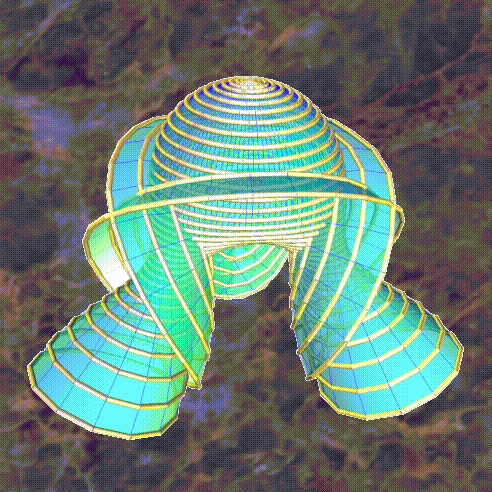

|
Sfb 288 Differential Geometry and Quantum Physics |
 Bonnet Surfaces
Bonnet Surfaces
 in Euclidean 3-space
in Euclidean 3-space
In surface theory the compatibility conditions that ensures the integrability of the moving frame equation are of main interest. Are they dedundant or at all necessary? This problem was the starting point for O. Bonnet to ask, whether a surface is define by just its metric and the mean curvature. In particular if a surface can be smoothly deformed by preservation of the mean curvature (as it is possible for CMC surfaces, surfaces of revolution, cylinders and circular helicoids) these both informations are not enough, to determine the surface. Are there beyond the above examples more such surfaces?
This is the classical problem, of O. Bonnet and surfaces beyond the above examples are called - reminding to him - Bonnet surfaces. The answer to Bonnets question is yes, but somehow the answer is somehow positive: the families of surfaces that might exist are only single surfaces up to some maybe existing exception surfaces. Moreover this exceptional surface are either cylinders, surfaces of revolution or circular helicoids. So, even this "worst case" - a whole family of isometric surfaces with the same mean curavture - is finally a "nice case".

Bonnet Surface of Type B.
In 1994 Bobenko and Eitner showed that all these surfaces can be parametrized in terms of Painleve functions. Even though the differential equation that is to solve was known since more than 100 years it was surprising that there exist a reduction to some particular Painleve equations, which was found because of a very significant structure of the moving frame equation. Each Painleve equation can be expressed as the compatibility condition of a certain linear system.
Later Eitner showed that by use of the so-called Schlesinger-transformation one can get new Bonnet-surface from a known one.